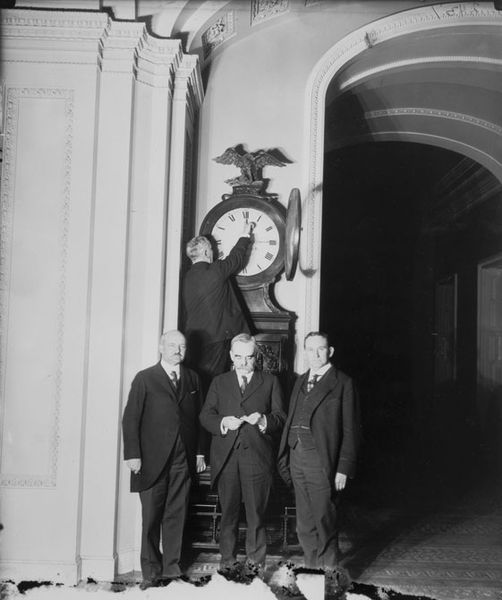
Figure 1 – The Great Ohio Clock in the United States Senate being set forward in 1918 for the first daylight savings day. In the public domain because it was taken by a US government employee.
On Friday I had my last drive home from work in the light until next March. Fall back to Standard Time – hiss, boo to that. They have plunged me into darkness again. So I started wondering, who exactly the evil they is. Needless-to-say it is our otherwise do nothing congress – indeed they have failed to weigh in on this controversy in a while. So I thought that I would do some research. And here’s a major surprise, it’s not a simple story.
During World War I DST was enacted by congress in the United States with the Standard Time Act of March 19, 1918. This established time zones and set DST to begin on March 31, 1918 and end on October 27, 1918. This was not a popular concept and congress actually had to override President Woodrow Wilson’s veto. Even so, DST was a state by state option until World War II when President Franklin Roosevelt instituted year-round DST, which he called “War Time”, on February 9, 1942. It lasted until the last Sunday in September 1945. After 1945 things went back to state by state, and worse each state could decide on the inclusive dates. What a confusion especially for trains and buses and airplane schedules.
Indeed, it was the transportation industry that lobbied successfully for passage of the Uniform Time Act of 1966 (P.L. 89-387). Then in 1973 during the oil embargol Congress, in an effort to conserve fuel, enacted a trial period of year-round DST.
In 1986, Congress enacted P.L. 99-359, amending the Uniform Time Act by changing the beginning of DST to the first Sunday in April and having the end remain the last Sunday in October. Then in 2005 the Energy Policy Act of 2005 extended DST to begin on the second Sunday of March and ends on the first Sunday of November. And there basically we are. I know, I know, what a big yawn.
But here we are on the verge of a very historic election. So it is relevant to share the photograph of Figure 1, which shows the Great Ohio Clock on the first daylight savings day in 1918. This Ohio Clock has, since 1859, been in or near the United States Senate Chamber. Shown are: Senate Sergeant at Arms Charles P. Higgins turning the Ohio Clock forward, Senators William M. Calder, Willard Saulsbury, Jr., and Joseph T. Robinson. Think of it, that clock summoned the United States Senate into session in time of great national crisis, the American Civil War, World War I, World War Two, and 9/11. After the Republican victory in the mid-term elections of 2010, Senate Majority Leader Mitch McConnell proudly announced his agenda. ““The single most important thing we want to achieve is for President Obama to be a one-term president.” Didn’t work out so well, I guess. But really, for any of us. Here’s the thing, discord was spread on all sides, and The Ohio Clock stopped at 12:14 pm on October 9, 2013. The curators who cared for the great clock were furloughed due to the government shutdown. I am reminded of Goethe’s Faust describing his own end and suggest that we all think on Tuesday of this tragic figure, who made a pact with the devil.
“Die Uhr mag stehn, der Zeiger fallen,
Es sei die Zeit für mich vorbei!”
“The clock may stop, the clock-hands fall,
And time come to an end for me!”
